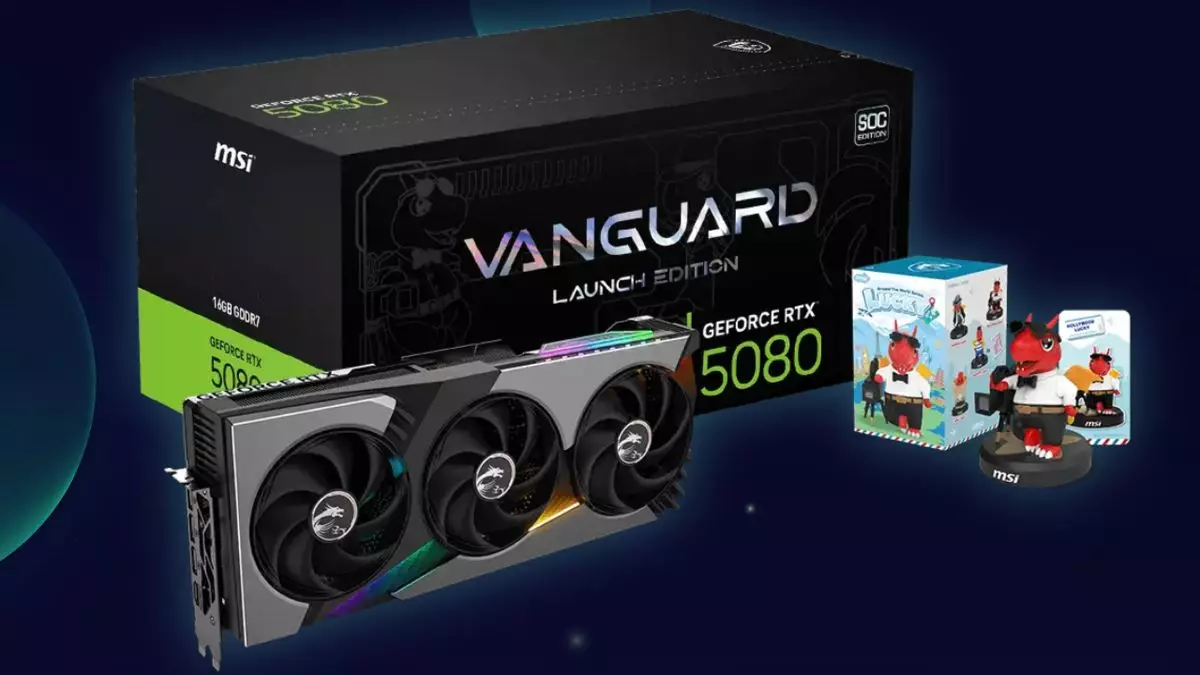There’s something profoundly intriguing about collectibles. They stir a sense of nostalgia, perhaps reminiscent of childhood aspirations and the zeal of treasure hunting. My father once had a quaint dream of someday cashing in on his collection of Natwest pigs. Alas, that dream fizzled out along with the value of those ceramic curiosities. Fast forward to today, and we find ourselves in an era where collectibles have morphed into tantalizing opportunities intertwined with cutting-edge technology. Enter MSI’s audacious promotion featuring the Lucky Dragon figurines, a scheme that surprisingly resonates with both gaming enthusiasts and casual collectors alike.
The Dragon Chase: How It Works
For Taiwanese residents, the allure of acquiring an RTX 5080 by collecting nine Lucky Dragon figurines is a curious proposition indeed. While it would be easy to dismiss this as marketing fluff, the underlying strategy offers genuine value to a discerning audience. Gamers are no longer just passive consumers; they are active participants in a game ecosystem that thrives on exclusivity and rarity. However, the hoops one must jump through are significant. To secure these figurines, one must purchase MSI’s Vanguard series GPUs, an endeavor already complicated by stock shortages and price markups that have plagued the graphics card market. The catch is somewhat cruel—one must fork out substantial cash for a high-demand product to even start collecting the figurines.
The Secondary Market: A New Battlefield
As the promotion steamrolls forward, a burgeoning secondary market for these figurines has emerged. Reports indicate that collectors are willing to pay upwards of NT$4,000—approximately $121—for individual models. This development raises pivotal questions regarding the value placed on collectibles. It’s fascinating to see how an essentially promotional item can become a potentially lucrative asset. The apparent scarcity of these Lucky Dragons has injected a dose of urgency into the collector community, where some are left scrambling to complete their sets. The price for entry becomes more than just the figurines; it’s a reflection of the heightened demand for the RTX 5080 among gamers keen on securing a formidable graphics card.
The Irony of Gaming Culture
One must dig deeper into why promotions like this resonate within the gaming community. The irony lies in the inherent gamification of marketing strategies. Gamers, often characterized as tech-savvy and in pursuit of the latest gadgets, find themselves spiraling into a new kind of quest—one not solely defined by digital achievements but by physical collectibles. It’s delightful to ponder the thoughts racing through the minds of gamers on the precipice of acquiring a coveted RTX 5080. The stakes feel higher, the motivation palpable. Many will even dive into the labyrinth of second-hand sales with the hope of turning a figurine into the ultimate gaming upgrade.
Where Sentiment Meets Economics
A closer look reveals an intricate dance between sentiment and economics. Figurines, once mere add-ons, now occupy a critical role as conduits of exchange in a gaming market rife with challenges. The rush to get one’s hands on a graphics card is amplified as these figurines transform into tokens of status. The potential financial payoff begets a sense of competitiveness; a figurine’s price seems almost trivial compared to the thousands spent on GPUs. Yet here’s where the sentimental value veers off course — the figurines collect dust while dreams build higher. The absurdity hits home: I personally sheepishly reminisce about my own forgotten collectibles tucked away on less-than-sterile shelves.
A Reflection on Whale Culture
Even as companies lure customers with tantalizing promotions, they generate parallel cultures that prompt deep reflection. The entire collectible phenomenon exposes how gamers navigate emotional landscapes laden with nostalgia and community—both anchored in and driven by a capitalist undercurrent. One cannot help but wonder: what does it truly say about us as consumers when figurines—miniature artwork, if you will—possess the potential to outweigh the very technology we covet? Gaming culture may be rife with innovation, but it simultaneously reveals layers of emotional intricacies that ensure the passion for collectibles remains a vibrant subtext within this digital age.

